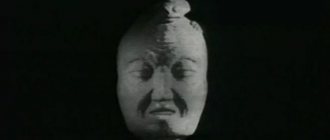Sleepwalking in adults: a disease or not? In the scientific community and environment, sleepwalking is called somnambulism, in medical language. This condition is shrouded in a lot of myths. The science that studies this phenomenon is psychosomatics.
This concept has a definition - sleepwalking and sleeptalking. Previously it was argued that walking in a dream is associated with the phases that the moon goes through.
Sleepwalking - why do people walk in their sleep?
Although modern scientists have long refuted this theory and given a more precise explanation of this fact.
Scientifically speaking, who is a sleepwalker?
Sleepwalking is widespread among people, affecting approximately 3.5% of the population. In the case when attacks of sleepwalking are constantly repeated, you need to consult a doctor. This condition can cause quite dangerous diseases, such as epilepsy. When somnambulism in an individual manifests itself accidentally, then the help of a specialist is not required. Sexual sleepwalking is also known; it most often occurs in young people during puberty.
Causes of sleepwalking
Scientists still don’t know what exactly causes sleepwalking. It is believed that heredity has a great influence on the frequency of sleepwalking - if someone in the family has somnambulism, it can manifest itself in others. This phenomenon usually occurs in childhood and disappears over time. But in adults it can appear under the following conditions:
- lack of sleep, because due to the lack of a full 6-hour rest, disturbances in the functioning of the human body may occur;
- stress and anxiety, which in themselves have a bad effect on the quality of sleep;
- use of antidepressants and other medications with a large number of side effects;
- breathing disorder during sleep such as apnea (short-term cessation of pulmonary ventilation).
As a rule, sleepwalking goes away after some time. But if this phenomenon is regular, it is recommended to consult a doctor.
Factors that provoke sleepwalking
Why do people walk in their sleep? Currently, scientists have found the main reason for the appearance of sleepwalking, but there are other specific hypotheses that explain this phenomenon.
The reason is the following - a large accumulation of carbon dioxide in the blood. In medical language it is called hypercapnia. Which occurs as a result of temporary cessation of respiratory movements.
People snore, and then they stop breathing for a while. Then they snore monstrously, as they need to draw in a portion of oxygen. These people experience such a condition.
Oxygen levels drop in the blood. Carbon dioxide levels rise. Serotonergic pathways are activated in the brain, where the hormone serotonin predominates.
Sleep, while snoring, stopping breathing. The brain tries to wake up a person, but only activates motor areas. A man gets up, walks somewhere, but sees nothing. Because the eyes are open, but they are sleeping. He is in a semi-conscious state.
Sleepwalking is accompanied by stress or fatigue
Usually, sleepwalking is characteristic of people with very high emotionality, subject to experiences and stress. In adults, the cause may be fatigue at work, insomnia, or taking medications such as sedatives and antihistamines. Sleepwalking also occurs in impressionable people when they find themselves in an environment that is unusual for them.
Other causes of somnambulism include pathologies associated with a person’s mental and physical state, which may well affect sleep. There may be physical reasons:
- head injury;
- severe migraine;
- obstructive apnea;
- convulsions and fever;
- epilepsy, its attacks;
- restless legs syndrome.
Psychological illnesses that cause attacks:
- split personality;
- panic attacks and so on.
Of course, the state of sleepwalking can be caused by drinking alcoholic drinks of various strengths and energy drinks. The mechanisms that work during sleepwalking are very simple and can be easily understood. The areas of the brain that are responsible for controlling movement have been identified. In addition, scientists have proven that somnambulism is a genetic disease and is inherited. Therefore, if parents were or are sleepwalkers, they may give birth to a child with the same disorder.
Signs of sleepwalking
If a person got up after going to bed and began doing everyday things, and then didn’t remember anything, most likely he was sleepwalking. During somnambulism, people can walk around the house, clean, and even talk. The most dangerous thing is when a sleepwalker starts preparing food or even leaves the house and gets into a car. Such cases are rare, but they do happen. All this time, the man’s eyes are open, but his gaze is empty and he seems to be looking through other people and does not recognize them. He may answer questions briefly or say something meaningless. Usually, somnambulism begins in the first hours after going to bed and lasts about 10 minutes. Sometimes it happens that sleepwalking lasts only a few seconds. In very rare cases this lasts more than an hour.
It is believed that the tendency to sleepwalking can be inherited
It is important to note that sleepwalking occurs during deep sleep. It is at this time that the body is restored - a person dreams, but after waking up he no longer remembers them. Dreams are usually remembered during REM sleep.
Causes of sleepwalking in adults
The symptoms of sleepwalking are different, and they are always visible to the patient’s relatives.
Symptoms that can be noticed in the patient:
- Sleep apnea. That is, snoring, loss of breath for a while;
- Restless sleep with twitching of limbs;
- Smacking, frequent swallowing, etc.;
- You can also hear the patient talking in his sleep, usually with his eyes open, and under certain circumstances he can enter into a dialogue either with someone nearby or with himself; in some cases he can shout sharply in his sleep, quite loudly.
All of these symptoms are typical for people with a hot temper and a high degree of irritability who take sedatives.
Sleepwalking girl with glassy eyes
A person suffering from sleepwalking may also grind their teeth in their sleep and sit with their eyes open but with a glassy look. Of course, one of the main signs is sleepwalking. The consequences of sleepwalking are very serious if nothing is done.
During such an attack, the individual experiences:
- moves around the house;
- begins to take different objects;
- turns on lights and various household appliances;
- gets dressed or performs other familiar activities.
There are times when a patient goes outside and the front door is open, which poses a danger and can harm himself and others. A person begins to sleepwalk in a state of deep sleep, which occurs several hours after falling asleep. In this case, in the morning the person will not remember what happened last night. In each patient suffering from this disease, sleepwalking manifests itself differently. For some, attacks begin in stressful situations and occur rarely, for others it occurs frequently, even several times in one night.
How does sleepwalking manifest?
How does sleepwalking manifest?
However, most sleepwalkers are more active. They move around the apartment, move objects, perform various tasks and can even answer basic questions. As a rule, sleepwalkers do not leave the room or apartment, but there are cases in history when they went several miles from home. An attack of sleepwalking usually lasts no more than 40 minutes and ends when the person returns to bed.
The face of a person suffering from somnambulism does not express any emotions, while the eyes are open. All actions performed by a person during an attack of somnambulism are completely unconscious and upon awakening the person does not remember anything about his attack.
Is it possible to wake up a sleepwalker?
Of course, you need to know that it is not recommended to wake a person in this state, as this can frighten and cause severe psychological distress. There is also a category of sleepwalking called “aggressive”. In this case, the sleepwalker experiences attacks of aggression towards people who are nearby at the moment.
Such people can injure themselves, be injured by household objects, or fall out of a window.
If you see such a state of sleepwalking, you need to take the person by the hand and take him to bed. You need to understand that a person can be awakened if he needs your help. Since the motor zones are awakened, and the zones responsible for consciousness are asleep. If necessary, wake him up gently.
The danger of sleepwalking
Scientists have no reason to believe that sleepwalking harms the human body. The only danger is that in such a state people can harm themselves and others.
There are even cases in history when people committed terrible crimes during somnambulism. For example, in 1987, 23-year-old Canadian Kenneth James Parks went to bed with his wife after he was fired from his job. In the middle of the night, due to stress, he had an attack of sleepwalking and drove his car 24 kilometers to his wife’s parents’ house and killed his father-in-law and mother-in-law. The court concluded that the man had no reason for this horrific act and the jury acquitted him on the grounds of "uncontrollable actions while sleepwalking."
Kenneth James Parks - the man who committed a crime while sleeping
Links to interesting articles, funny memes and much other interesting information can be found on our Telegram channel. Subscribe!
Sleep is one of the most mysterious phenomena and scientists are constantly studying it. Some people stop moving while they sleep, a condition called sleep paralysis. You can read more about it in this material.
Prevention of attacks and accidents associated with somnambulism
In order to avoid accidents, you need to secure the room in which the sleepwalker sleeps. To do this you need:
- remove all piercing and cutting objects from the room (knives, forks, tools and even pens and pencils);
- turn off and remove electrical appliances that are in the room and in the kitchen;
- close the windows in the house tightly;
- turn off all the lights in the room (night light, chandelier), as they can provoke somnambulism.
By using these tips, you will reduce the incidence of injury to the sleepwalker.
Sleepwalking attack
Treatment for somnambulism
It is carried out when obvious health problems or pathologies associated with the state of the brain and nervous system are detected.
In the absence of obvious diseases, only recommendations are given on creating conditions for healthy sleep and eliminating factors that provoke the occurrence of disorders. In difficult cases, it is suggested to use hypnosis.
Indications for mandatory drug treatment are:
- the young patient has epilepsy (antiepileptic drugs Felbatol, Depakote are prescribed);
- the appearance of neuroses and depression (sedatives valerian, Novo-Passit, psychotropic drugs are used);
- detection of worms (antiparasitic drugs Pirantel, Dekaris are used).
If it is discovered that sleepwalking in children is a consequence of a brain tumor or head injury, surgical treatment is performed.
Diagnosis of sleepwalking
When you have an attack of sleepwalking, you may well associate it with stress or overwork, then you may not need to see a doctor right away. If such attacks happen more than once, then you should go to a neurologist, neuropsychiatrist or psychiatrist so that he can help you solve this problem.
In order for a specialist to be able to understand the cause of this phenomenon, relatives need to:
- write down on paper the time the sleepwalker falls asleep, after what period of time the walking episode begins, how long it lasts, how the patient behaves in such a situation, whether there are attacks of aggression at this time, and then indicate the time of morning awakening;
- understand the causes of attacks that were noted at the beginning of the article;
- provide a list of foods that a person eats, as well as medications that he takes.
And you need to take all this data to your doctor’s appointment, they will certainly help him.
In this case, the specialist will conduct a conversation with the sleepwalking patient, ask him certain questions, conduct an examination, and then prescribe additional examinations, if necessary, to confirm or refute the disease. After all, it is a correct diagnosis that will give the desired effect of treatment.
Diagnostics
If signs of sleepwalking appear, you should visit a neurologist, psychiatrist or neuropsychiatrist.
These specialists will be able to determine the cause of the disease and prescribe appropriate treatment.
To help your doctor make a diagnosis, you need to:
- ask relatives to record the time the patient falls asleep, when he begins to sleepwalk, how he behaves during this period, what time he wakes up in the morning;
- identify possible causes that could provoke an attack;
- make a list of foods that are constantly included in the diet, medications taken regularly.
The doctor, after talking with the patient, will prescribe the following research methods that will confirm or refute the diagnosis:
- electroencephalography - makes it possible to determine the electrical activity of the brain and detect epileptic foci in this organ;
- polysomnography - the patient spends the night in a sleep laboratory, sensors are pre-connected to him, with the help of which, after he falls asleep, changes in the nervous system can be monitored;
- Ultrasound of cerebral vessels to determine the nature of blood flow;
- computed tomography or magnetic resonance imaging to detect or exclude the presence of tumors or any other pathological changes;
- consultations with other specialists: cardiologist, endocrinologist, pulmonologist to identify somatic diseases that can provoke sleepwalking.
How to fight - treat sleepwalking
At present, no medicine has yet been created that would help completely get rid of sleepwalking.
People suffering from sleep apnea have a device placed on their finger that shows how much carbon dioxide and oxygen is in the blood. Next, CPAP therapy is used. Forced saturation of blood with oxygen. It turned out that stopping sleep apnea cures a person from sleepwalking.
Therefore, treatment methods in other cases proceed in the order of minimizing, reducing these episodes. Somnambulism will occur quite rarely, or even stop altogether, if the person sleeps soundly and avoids stressful situations. A person should also not take strong coffee, energy drinks or alcohol. If sleepwalking is a consequence of any disease, then it should be properly treated.
Therapy is selected after a doctor has examined the patient and established the cause of somnambulism, as well as a correct diagnosis. When sleepwalking takes the aggressive form mentioned above, you have to prescribe medications to treat it.
Forecasts
Most often, sleepwalking is not dangerous, recovery occurs even without treatment. But often the disease is accompanied by other serious diseases that require long-term therapy.
If somnambulism is caused by mental disorders, brain tumors, epilepsy, then the prognosis for the cure of sleepwalking depends on the severity of the underlying disease.
In old age, sleepwalking develops against the background of dementia. In this case, the prognosis is unfavorable.
Sleepwalking is often observed in adults and children; the causes and treatment of the disease depend on various factors. There are many traditional and folk methods to get rid of sleepwalking. But you should start with normalizing your sleep and daily routine.











